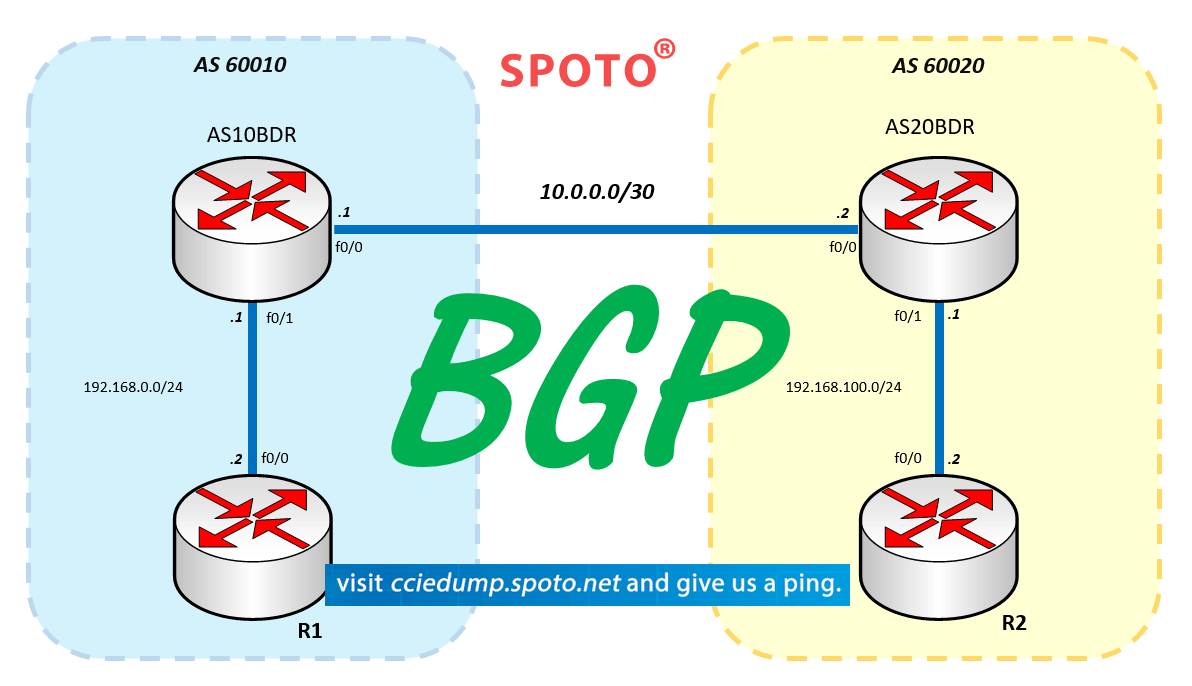When you're studying for the CCNP certification, especially the BSCI exam, you must gain a solid understanding of BGP. BGP isn't just one of the biggest topics on the BSCI exam, it's one of the largest.
What is BGP
BGP (Border Gateway Protocol) is a protocol that manages how packets are routed over the Internet through routing and reachability information exchange between edge routers. BGP boots packets between the autonomous system (AS)-networks managed by a single enterprise or service provider. Traffic routed within a single network AS is called an internal BGP or iBGP. More commonly, BGP is used to connect one AS to other autonomous systems and then call it an external BGP or eBGP.
What is BGP used for?
BGP provides network stability to ensure that routers can quickly adapt to sending packets over another reconnection if one Internet path fails. BGP makes routing decisions based on paths, rules, or network policies configured by network administrators. Each BGP router maintains a standard routing table to guide packets in transmission. This table is used in conjunction with a separate routing table, called the routing information base (RIB), which is a data table stored on a server on a BGP router. The RIB contains routing information from the external peer and the internal peer of the direct connection, and constantly updates the routing table when changes occur. BGP is based on TCP / IP and uses client-server topology to transmit routing information. Client-server starts the BGP session by sending the request to the server.
BGP has a lot of details that must master the success of BSCI, and those who focus only on CCIE must now learn the basics of BGP so that they can build on it later.
The path attribute is a unique function of BGP. For internal gateway protocols such as OSPF and EIGRP), administrative distances are used as arbiters when two routes arriving at the same destination have different next-hop IP addresses but have the same prefix length.
BGP uses the path property to make this selection. The first attribute considered by BGP is weight. Weights are Cisco-specific BGP attributes, so if you work in a multi-vendor environment, you should use other properties to affect path selection.
The weight property makes sense only to the router it changes. If you set a higher weight for a particular route to give it a priority (the higher weight takes precedence over the lower weight), the weight is not notified to other routers.
BGP uses categories such as delivery, non-delivery, forced, and optional to classify properties. Because weights are an important local Cisco proprietary attribute, not all categories fall into this category. You can change weights on a single route through a roadmap, or you can set different weights for all routes received from a given neighbor. To change the weight of all incoming routes, use the weight option of the neighbor command after forming a BGP peer relationship.
R2 (config) # router bgp 100
R2 (config-router) # neighbor 100.1.1.1 remote-as 10
R2 (config-router) # neighbor 100.1.1.1 weight 200
when you first start learning BSCI and CCNP exams, learning all BGP attributes and when to use them seems to be a daunting task. Break down this task into small parts and learn one attribute at a time, and soon you will master the BGP property.

 Join Telegram Study Group ▷
Join Telegram Study Group ▷














